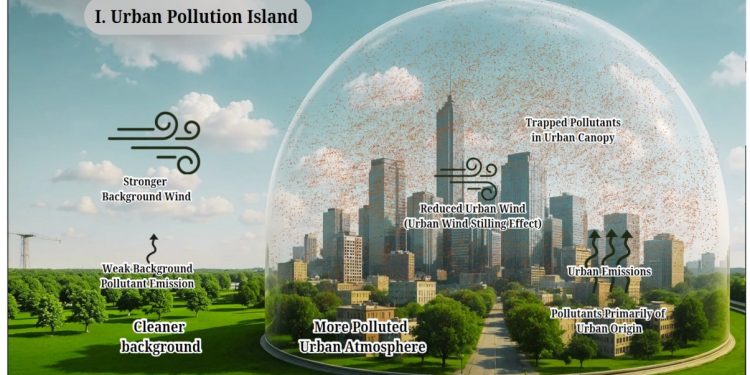Bhubaneswar: In a groundbreaking revelation that challenges long-standing beliefs about urban pollution, a new study from the Indian Institute of Technology (IIT)-Bhubaneswar has discovered that several cities in northern India may actually be cleaner at their core than their surrounding areas. The findings, published in the prestigious Nature portfolio journal ‘Communications Earth & Environment’, highlight the presence of what researchers call ‘clean air domes’ — a stark contrast to the commonly accepted notion of urban pollution hotspots. The study, led by School of Earth, Ocean and Climate Sciences associate professor V Vinoj, along with research scholar Soumya Satyakanta Sethi, analysed two decades of high-resolution aerosol data from 141 Indian cities. Their research reveals that cities in the Indo-Gangetic Plain — including some of the country’s most polluted regions — often have city centres that are relatively cleaner than the surrounding non-urban and semi-urban zones.
Traditionally, cities are viewed as ‘pollution islands’, where emissions from vehicles, industries, and human activities are most concentrated. However, the IIT-Bhubaneswar study uncovers a ‘punctured pollution dome’ pattern in many northern and northwestern cities. Instead of pollution being trapped above the city, it appears to accumulate more in areas surrounding the city.
According to the researchers, this phenomenon can be attributed to the ‘invisible barrier’ effect of urban landscapes. Tall buildings and uneven structures in cities disrupt wind flow and trap pollutants locally — but these same structures can also block polluted air from entering the city from surrounding regions. In areas affected by long-range pollution — such as dust storms and transported aerosols — this leads to a cleaner urban centre and dirtier peripheries. In contrast, cities in southern India, where pollution is more locally generated and not heavily influenced by long-range transport, still display the traditional urban pollution dome effect, with city centers more polluted than their outskirts. “This finding rewrites how we understand pollution patterns in Indian cities,” said Vinoj. “It tells us that urban pollution isn’t just about what happens inside a city — it’s equally about what’s happening around it and how the city’s structure interacts with the atmosphere.” The study also calls attention to the limitations of current air monitoring practices, which often focus only on data collected from within city boundaries.
The researchers argue that without a regional perspective, policies may misjudge the true sources and patterns of pollution. Beyond air quality, the study has broader implications. The team emphasises the need for integrated urban climate planning, especially through tools like urban digital twins — virtual models of cities currently being developed at IIT Bhubaneswar. These models could help policymakers simulate and tackle not only air pollution but also heat stress, flooding, rainfall variability, and other climate-related challenges. As India continues to urbanise rapidly, this research urges planners and policymakers to move beyond conventional frameworks and adopt a more nuanced, regional, and climate-informed approach to building sustainable cities.







































